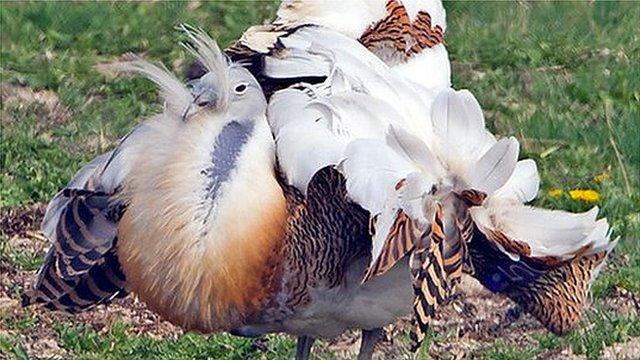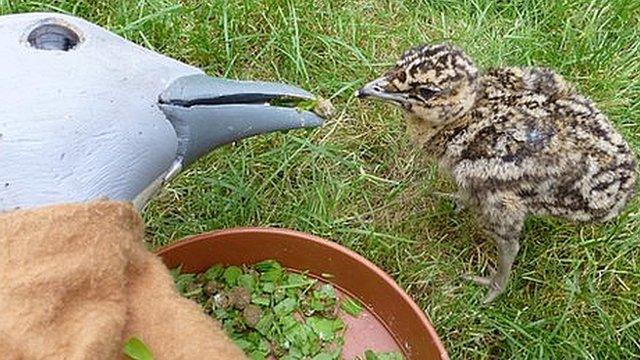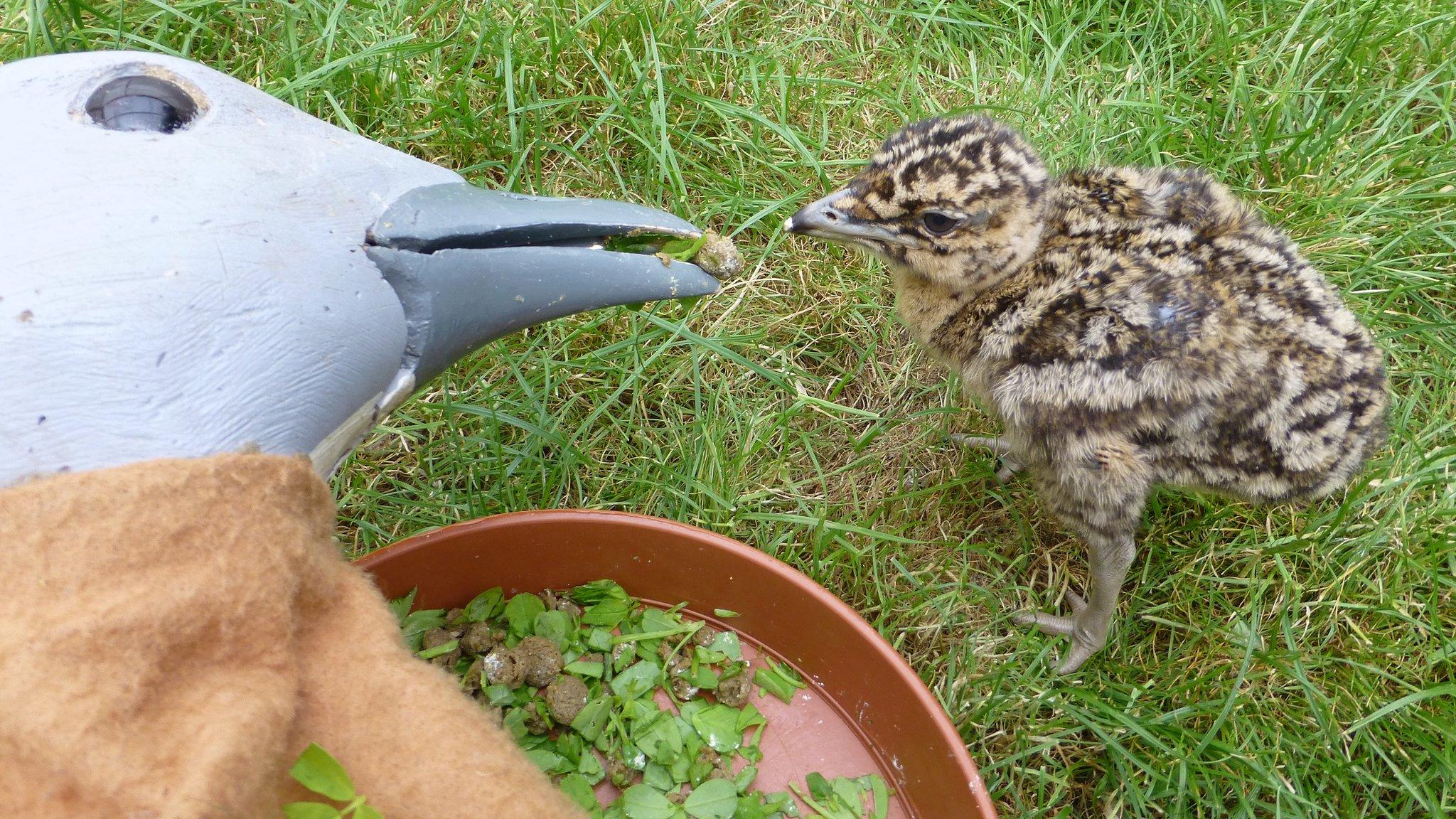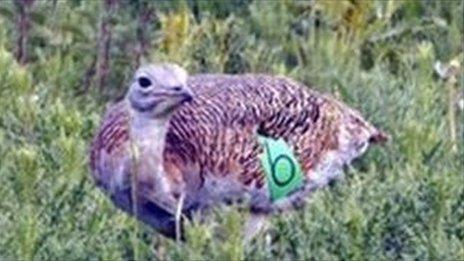Spanish great bustard eggs imported to Wiltshire
- Published

Skin samples from stuffed specimens at Salisbury and South Wiltshire Museum were used by researchers to carry out a genetic comparison
Great bustards from Spain rather than Russia are to be released in Wiltshire after it was found they share closer DNA links to the original UK variety.
The last UK great bustard, the world's heaviest flying bird, was shot in 1832.
Since 2004, the Great Bustard Group (GBG) has been re-introducing Russian great bustards on to Salisbury Plain.
However, research has shown the Spanish version of the bird is a closer DNA match to the British bustard.
Thirty three of the birds from Spain will now be released in the county later this year.
Abandoned nests
Using chicks and eggs, exclusively sourced in Russia, The Great Bustard Group (GBG) has released more than 100 birds in the last decade.
But, with the UK Government restricting its importation of eggs to those rescued from destroyed and abandoned nests, the group said it had only been able to import as few as six a year.
"We've proved that great bustards can survive in Wiltshire and that they can breed," said David Waters, GBG director.
Last year, a genetic comparison of European great bustard populations was carried out by the University of Chester.
Using skin samples from stuffed "old English" specimens at Salisbury and South Wiltshire Museum, as well as blood samples from European populations, researchers found the Spanish bird to be the "closest living" match.
"It's exciting news - the previously released Russian birds tended to disperse in a south westerly direction, some even reaching France," said Mr Waters.
"But the Spanish population is the largest in the world, is increasing and is largely sedentary."
Eggs have been collected from the Castilla la Mancha region of Spain and incubated and hatched at Birdworld in Farnham, Surrey.
The group hopes to release the birds at two secret sites later this year.

The young great bustard chicks need to be bill fed with a puppet by their human foster parents
- Published18 December 2012

- Published12 July 2012

- Published29 May 2012

- Published12 September 2011

- Published10 June 2010